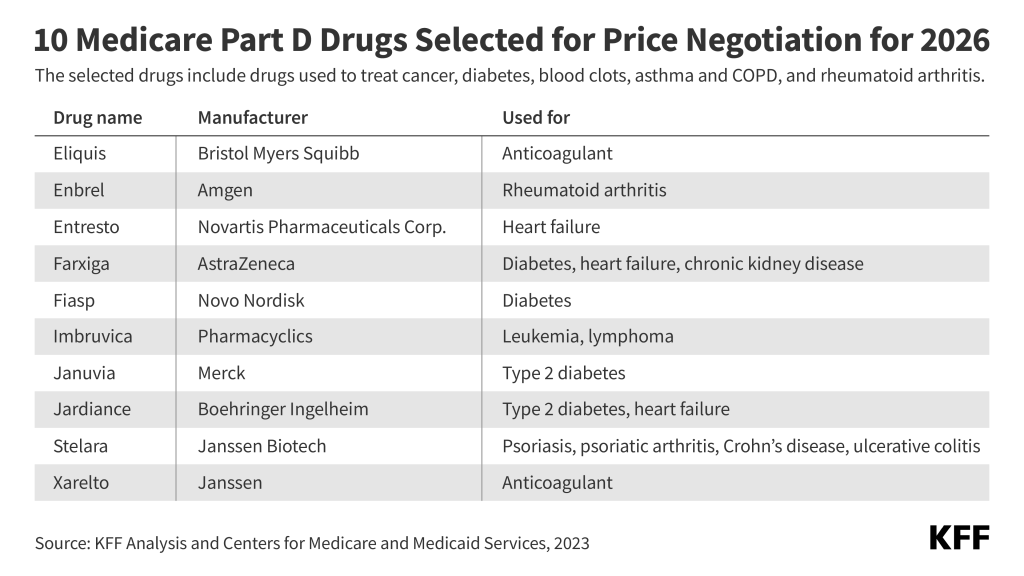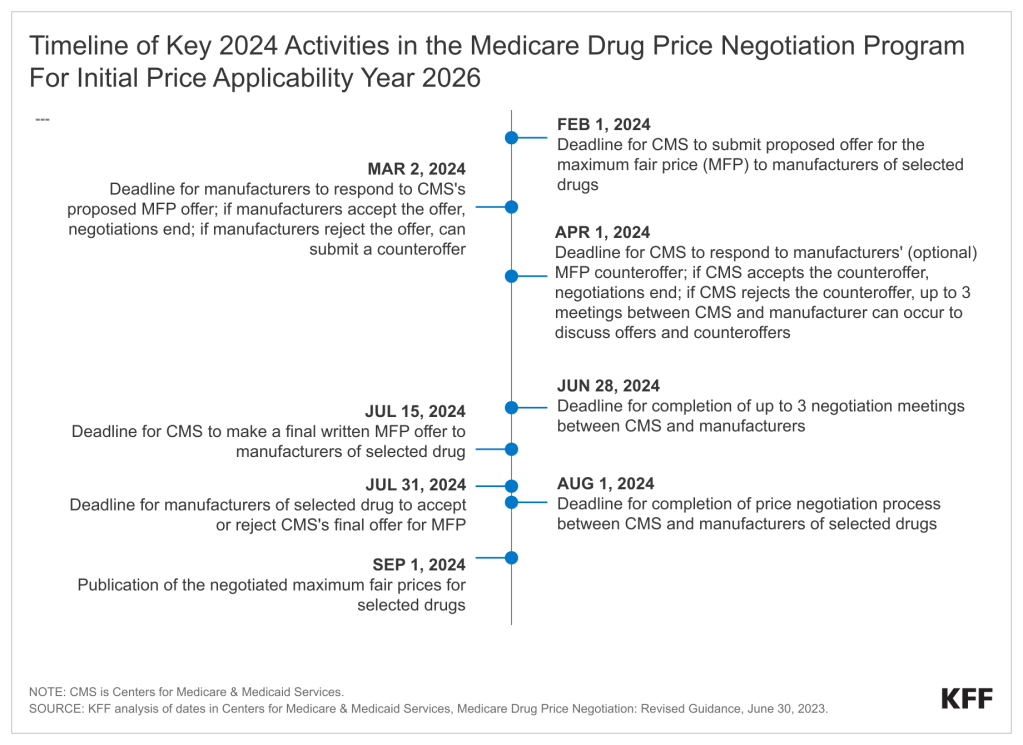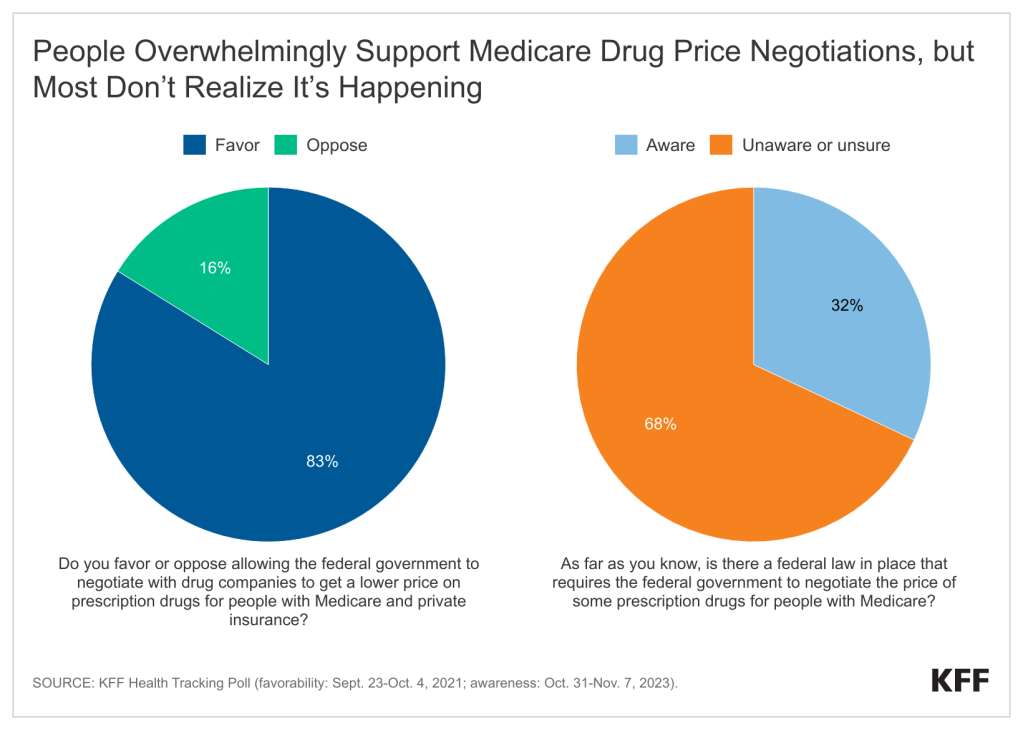[ad_1]
Beneath the Inflation Aid Act, the government for the primary time will negotiate at once with drug firms to resolve the costs that Medicare pays for sure top expenditure medicine coated below Medicare Section D (beginning in 2026) and Section B (beginning in 2028). Section D covers retail prescribed drugs and Section B covers physician-administered drugs.
This new requirement is the end result of years of dialogue amongst lawmakers in Congress, and the Facilities for Medicare and Medicaid Services and products is enforcing this system in step with the timeline established within the regulation. In the meantime, the drug business and others have filed a number of court cases in quest of to dam the hassle. This week CMS faces a closing date to post proposed costs to producers for sure medicine.
Those 3 charts provide an explanation for key parts of the drug negotiations procedure and what it way for Medicare beneficiaries, the timetable in step with which the method will spread, and the general public’s perspectives about requiring the federal government to barter drug costs.
1) The primary ten Section D medicine decided on for Medicare worth negotiation on August 29, 2023 come with remedies for diabetes, blood clots, center failure, psoriasis, rheumatoid arthritis, Crohn’s illness, and blood cancers. Jointly, Medicare spent greater than $50 billion on the ones medicine in a up to date 12-month duration. The selection of medicine matter to worth negotiation will building up in years yet to come. The Congressional Finances Place of work has estimated that negotiated costs will scale back Medicare spending on medicine matter to negotiation, translating into just about $100 billion in federal financial savings between 2026 and 2031. Worth negotiations additionally may decrease prices for some sufferers and spice up usage via serving to to make those medicine extra reasonably priced for Section D enrollees.

2) Even though the Medicare negotiated drug costs for those 10 medicine received’t take impact till January 1, 2026, the cost negotiation procedure between CMS and producers has already began to play out and can proceed to take action over the following a number of months of 2024. On February 1, CMS is needed to post to producers its proposed be offering for the “most truthful costs” – or the negotiated worth that CMS is prepared to pay – for the chosen 10 medicine. The method lets in producers to post a counteroffer and gives the chance for added back-and-forth between the government and drug firms over the following a number of months. The negotiation procedure ends on August 1 and the general negotiated most truthful costs for the medication shall be made public on September 1.

3) The general public overwhelmingly helps the theory of permitting Medicare to barter drug costs, together with majorities of Democrats and Republicans, in step with KFF polling. Considerable beef up a number of the public persists after listening to arguments for and in opposition to the theory. KFF polling additionally displays that a huge majority of other folks, together with maximum older adults on Medicare, are unaware or undecided that there’s a regulation at the books that calls for the federal government to behavior those negotiations. Additionally, not up to part of older adults learn about different provisions within the Inflation Aid Act that would save Medicare beneficiaries cash, akin to an insulin copay cap for Medicare beneficiaries and new limits on out-of-pocket prescription drug prices for other folks with Medicare.

For extra concerning the Medicare drug worth negotiations procedure and all the prescription drug-related provisions within the Inflation Aid Act, talk over with kff.org, the place you are going to in finding the next sources:
[ad_2]
Source link

